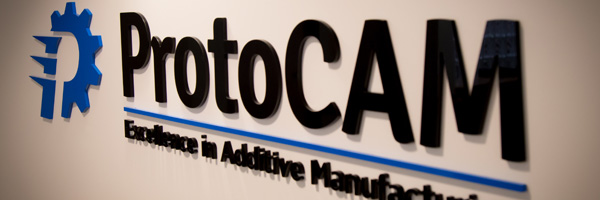
Additive Manufacturing 101: Common Questions
It’s time to take the mystery out of additive manufacturing. Here are the answers to a few common questions about the industry and where it’s headed.
Are any well-known commercial products made with additive manufacturing (AM)?
Thousands of products are made by additive manufacturing, and more are being created every day. Consumer products include toys, jewelry, art, and even shoes. Specialty medical devices include Invisalign® braces, dental crowns, and hearing aids. Industrial products—widespread but maybe not well-known—include jet engine fuel nozzles, carbon fiber fan blades, and heat exchangers.
How does additive manufacturing create parts that would be impossible with any other manufacturing technique?
Additive manufacturing creates parts layer by layer, similar to building a house of bricks. This layering process allows parts to have many complex features such as undercuts and blind passages. It can even produce geometries that are impossible to create with the traditional manufacturing processes of milling, drilling, and casting.
Why is 3D printing so exciting?
The opportunity to create things that used to be impossible is inherent within 3D printing! Every day we have the chance to create innovative solutions to engineering problems. We love working on these problems, and also seeing what other designers invent with this innovative technology.
What are the key differences between the various types of AM processes? What are the benefits and limitations of each one?
That’s a big question! For a quick overview, check out our guide to the different types of AM processes and what each is best for.
What are the latest developments in the materials that can be used for AM?
New materials are always being developed in the additive manufacturing field. The field is growing with specialty plastics, metal composites, glass, ceramics, and more. Developing alternative and biodegradable materials is a particular focus in the industry right now. Even asteroid matter has been used for additive manufacturing!
What are the limitations of additive manufacturing?
There is some limited ability for mass production using AM’s current techniques, although this is changing every day. In the past, large scale production hasn’t been feasible due to traditional manufacturing’s economies of scale and AM’s individual part costs. The AM industry is continuing to work on this, though, and it’s only a matter of time before mass production is possible. Even now, ProtoCAM offers faster technologies capable of larger production runs, like our Multi Jet Fusion technology.
Do you think AM will ever be able to produce large structures, such as an aircraft wing? If so, what’s needed to make this happen?
Yes—just as other manufactured items have grown in size throughout history, additive manufacturing is evolving to be able to create large-scale parts. To accelerate in this development, the needs are the same as any innovation—commitment, research, risk-taking, and creativity. At ProtoCAM, we’re helping to lead the way forward, in this area and beyond!
As 3D printing continues to evolve, how will it change traditional manufacturing processes?
Additive manufacturing and traditional manufacturing help each other when they work together. Additive manufacturing is an ideal way to create fixtures, jigs, and other pieces that support the manufacturing process. It’s a terrific way to make molds for all types of casting. Additive manufacturing also rapidly creates replacement parts for traditional production lines, improving efficiency, reducing downtime, and lowering the overall cost of production.
—
Have questions about how to bring your unique additive manufacturing project to life? Contact us here, or request a quote today!
